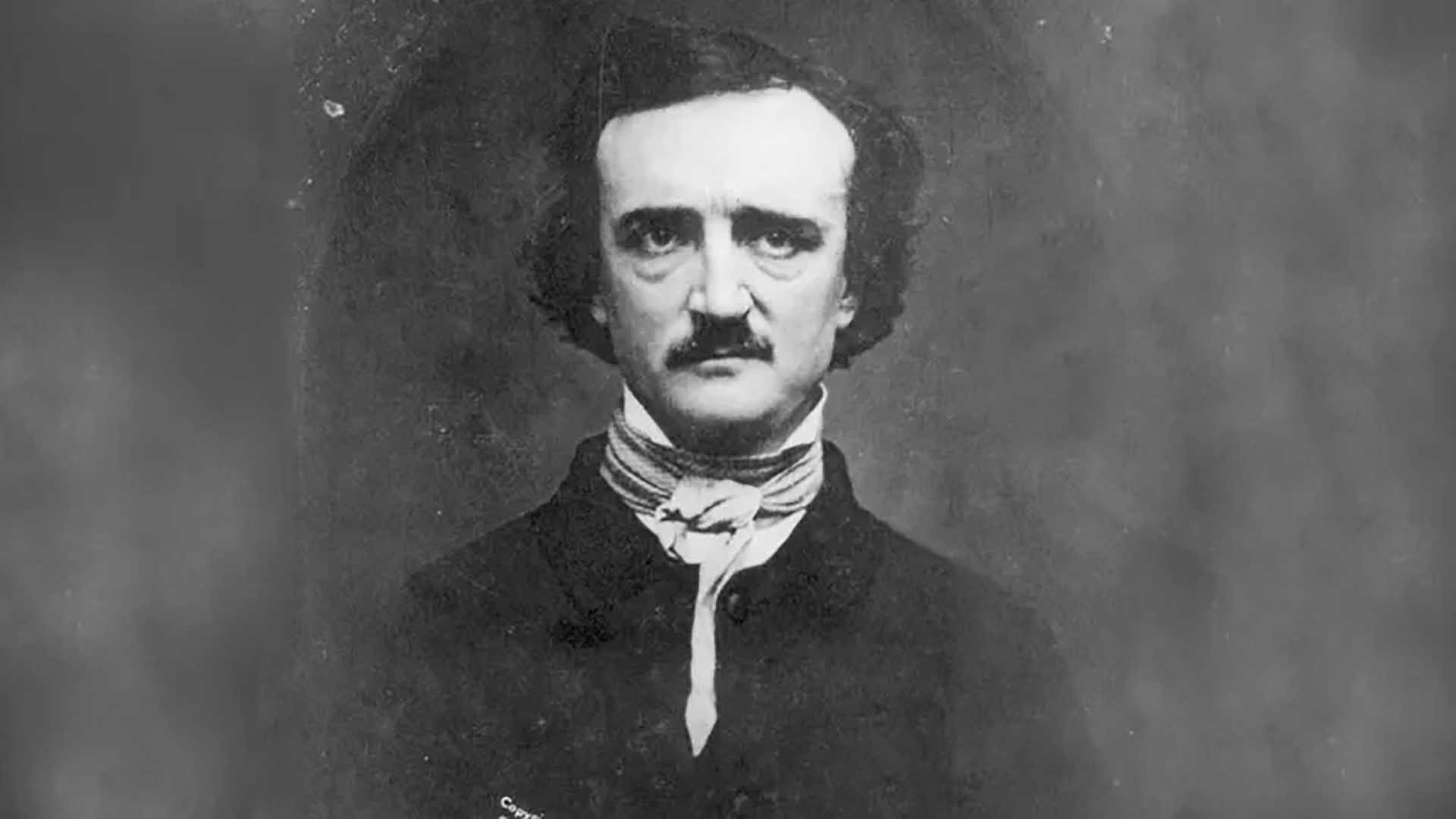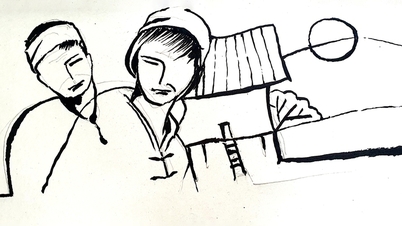Edgar Allan Poe (1809-1849) came from a family of itinerant actors. He became an orphan early, his parents died of tuberculosis. In his works as well as in his life, he was always haunted by his mother's death and had a mystical, pessimistic mood, with a tendency to seek the unusual, a sense of the supernatural, the magical, and the horrifying.
 |
| Writer Edgar Allan Poe. |
At the age of two, he was adopted by a wealthy merchant couple, John Allan and his wife. He lived with them in England from the age of six to eleven, then went to school in the United States. At the age of 14, he wrote his first book of poems for his girlfriend, the mother of a friend. At the age of 18, he dropped out of school because his adoptive father considered him lazy.
He funded the publication of Tamerlane and Other Poems (Tamerlane and Other Poems, 1827) at the age of 18. At the age of 27 (1836), he married his 13-year-old cousin. During the years 1831-1833, he lived in poverty but wrote extensively, writing criticism, editorials, short stories and poems for magazines.
The story The Scarabée d'or or Gold-Bug (1843) made Edgar Poe considered the father of modern detective stories.
The Golden Orange was the name given to a series of detective novels published in France after the Great War. The main character is Legrand, a cynical entomologist, living alone with his black servant Jupiter on a deserted island. One day, he caught a strange-shaped orange. That evening, a friend came to visit. Sitting by the fireplace, talking, Legrand drew a drawing of an orange for his friend; unexpectedly, the drawing of the orange turned into a skull. It was because he accidentally drew it on a piece of ancient parchment paper that he picked up on the beach, near where he caught the golden orange. The skull drawing, which was originally made with a chemical ink, appeared near the fire. Legrand heated it closer to the fire and saw a line of numbers and secret signs appear.
From then on, Legrand was always pensive, like a lost soul. About a month later, he asked Jupiter to invite his friend. The three of them organized an expedition on the island to find the treasure of gold that a robber had buried. Legrand deduced and found the secret of the code. They came to the foot of a lush old tree. Following his master's orders, Jupiter climbed the tree and found a human skull. From the tree, he followed his master's orders to drop a golden orange through the eyehole on the left side of the skull. From the point where the orange fell to the ground, Legrand calculated based on the code and found the place where the treasure was buried.
The Raven appears in a collection of poems, perhaps Edgar Poe's most famous poem. The first poem in the author's last collection, published at the age of 36 under the name The Raven and Other Poems (1845). The poem creates a gloomy, mysterious, and sinister atmosphere. Edgar Poe uses carefully considered techniques in composing: the refrain "nevermore" has a sad, desperate tone; With its resounding syllables and sobbing rhythm, the crow in the folk imagination is a bird of omen and mourning, associated with the image of crushed flesh and shattered bones, hopeless love for the deceased, the separation of the living and the dead but love still in the underworld... Due to the technical intention, the poetry is a bit too bold, the symbolic intention is quite obvious, so the poem lacks the innocence and purity of some simpler poems, such as Poem sent to the person in heaven (To One in Paradise, 1833), mourning for the deceased lover and Annabel Lee (Anabol Li, 1849), also on the same topic.
Edgar Poe created the typical amateur detective character in literature; especially in The Murders in the Rue Morgue (1841), an orangutan kills two people. He also created horror stories such as The Fall of the House of Usher (1839), about a castle and people, surrounded by a mystical atmosphere. These stories are in the collection Tales of the Grotesque and Arabesque (1840). Or The Narrative of Arthur Gordon Pym (1838), about a teenager's adventures at sea (rebellious sailors, storms, meeting a ship carrying corpses, ghosts...).
In 1847, his wife died after 11 years of marriage, he wrote a poem dedicated to Annable Lee. As a critic, he harshly criticized Longfellow, for example, calling Longfellow a "copycat" and causing much resentment. Addicted to alcohol, mentally unstable, epileptic, paranoid, without a regular income, he lived a miserable life, very sad because his wife died, sought comfort from some girlfriends, attempted suicide... and died after being drunk lying on the street.
Assessment of Edgar Allan Poe was very different after his death, although he was recognized as a great author. In general, British and American critics were somewhat reserved, considering Poe's works to be more of a technical masterpiece than a genius.
On the contrary, some French poets such as Baudelaire, who translated most of Edgar Poe's works, Mallarmé, Valéry highly praised him. The French Symbolist school of poetry considered itself a disciple of Poe, this school in turn influenced the Anglo-American movement, promoting images (Imagism) in the years 1909-1917. English poets such as Swinburn, Wilde, Rossetti, Yeats also revered Poe.
Psychiatrist Freud and his followers noticed the sometimes far-fetched elements of death and pathology in Poe's writing. There are also some of Poe's stories that signal existentialism. In literary theory, Poe advocated "Art for art's sake."
Source: https://baoquocte.vn/dao-choi-vuon-van-my-ky-6-270804.html




![[Photo] Hanoi morning of October 1: Prolonged flooding, people wade to work](https://vphoto.vietnam.vn/thumb/1200x675/vietnam/resource/IMAGE/2025/10/1/189be28938e3493fa26b2938efa2059e)
![[Photo] President of the Cuban National Assembly visits President Ho Chi Minh's Mausoleum](https://vphoto.vietnam.vn/thumb/1200x675/vietnam/resource/IMAGE/2025/10/1/39f1142310fc4dae9e3de4fcc9ac2ed0)
![[Photo] Keep your warehouse safe in all situations](https://vphoto.vietnam.vn/thumb/1200x675/vietnam/resource/IMAGE/2025/10/1/3eb4eceafe68497989865e7faa4e4d0e)






























































































Comment (0)